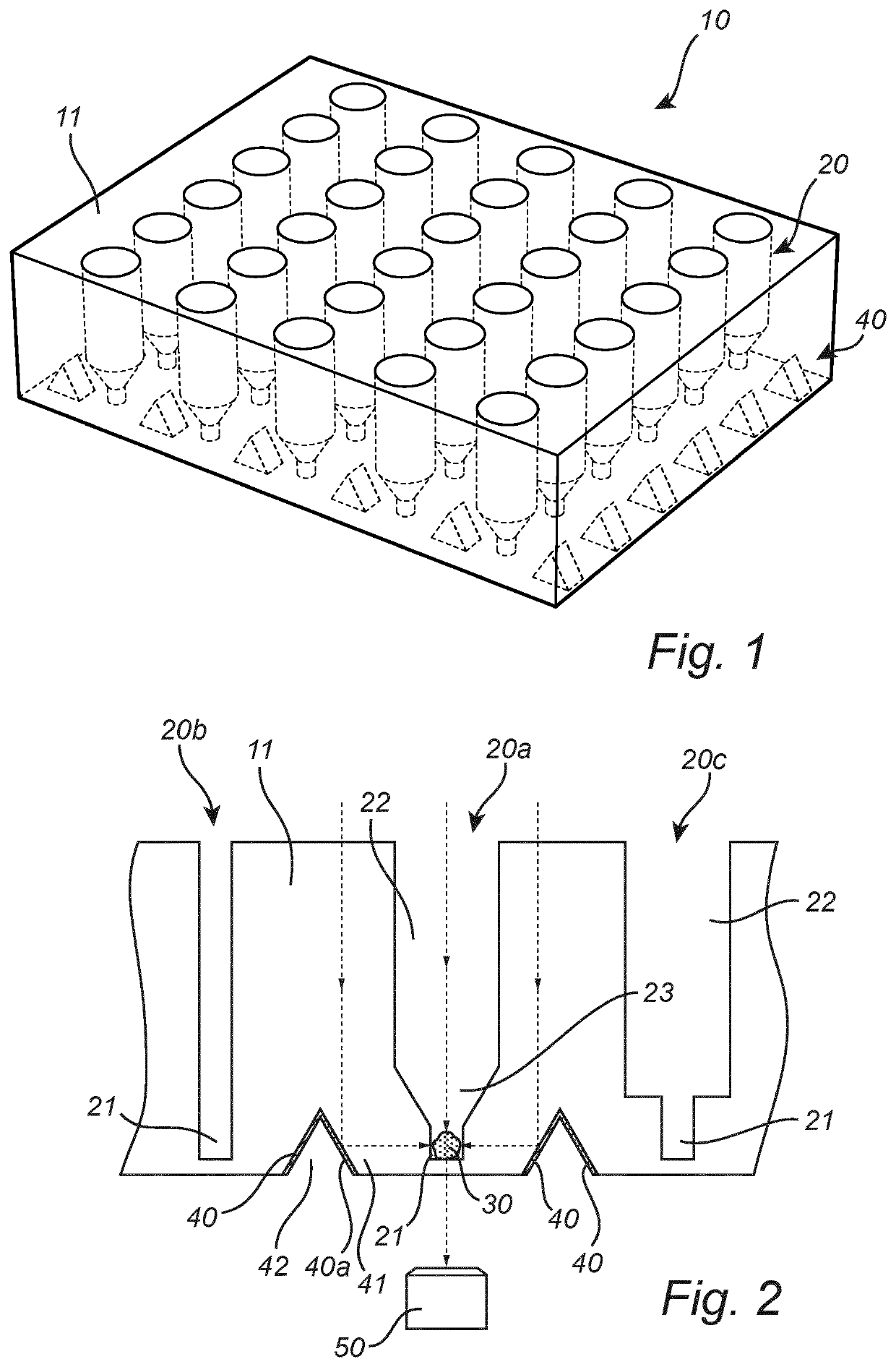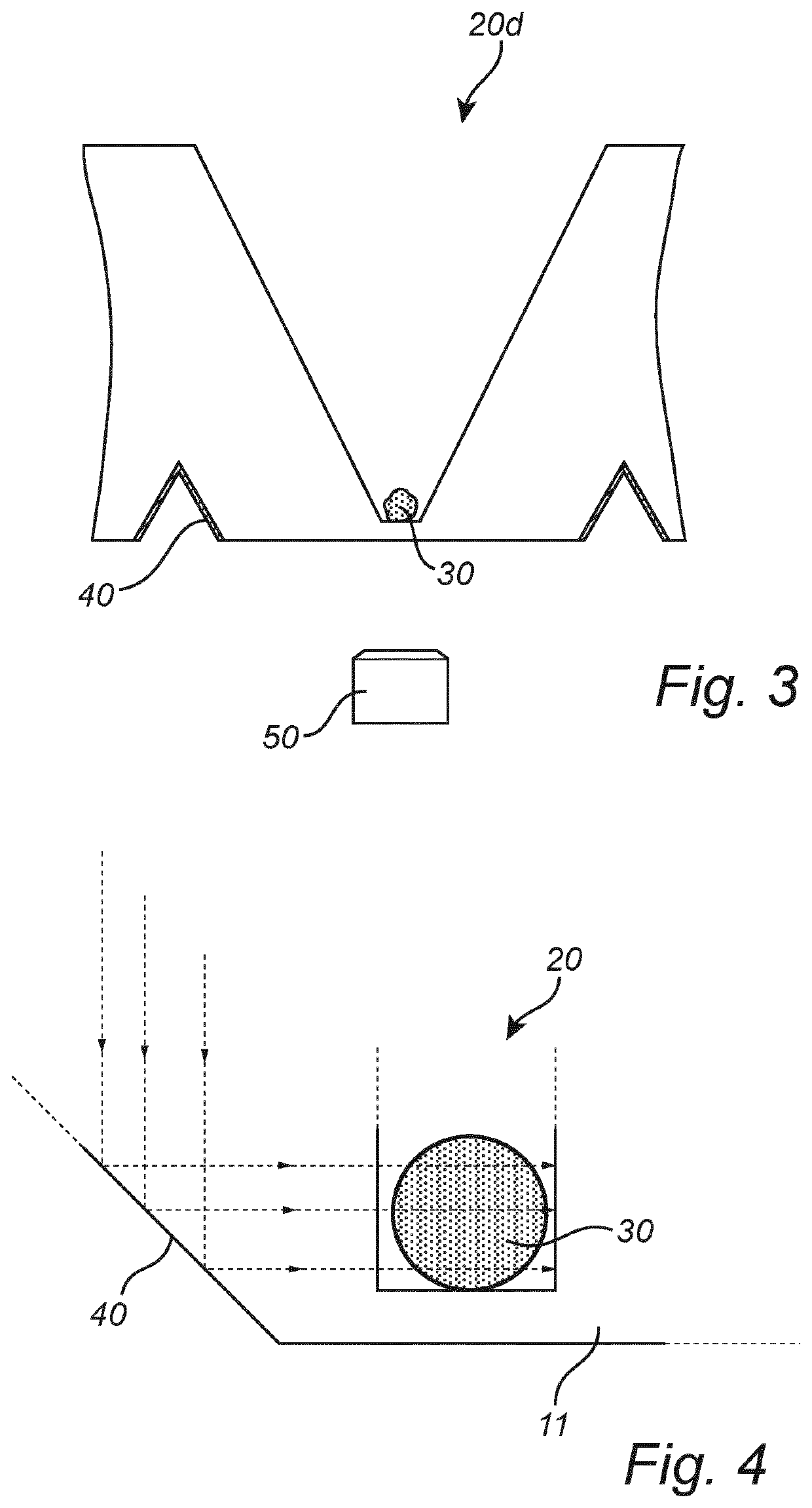Microplate for microscopy
a micro-scopy and micro-scopy technology, applied in the field of micro-scopy, can solve the problems of death of cells, vertical illumination, and thus excitation, and it is difficult to monitor them using a regular optical microscop
- Summary
- Abstract
- Description
- Claims
- Application Information
AI Technical Summary
Benefits of technology
Problems solved by technology
Method used
Image
Examples
Embodiment Construction
[0075]In FIG. 1 a microplate 10 can be seen. The microplate 10 is for microscopy of an organoid 30.
[0076]The microplate 10 has the shape of a cuboid. Other shapes are also possible, for example a cylindrical shape.
[0077]The microplate comprises a body 11. The body 11 has a plurality of recesses 20 in the form of wells 20. The body 11 may have just one recess 20 or a plurality of recesses 20.
[0078]The body 11 is made of a transparent material. The material at least being transparent to the light being used for microscopy. The body 11 may be made of transparent polystyrene.
[0079]The recesses 11 extend from a top side of the microplate 10 towards a bottom side of the microplate 10. The recesses 11 are open on the top side of the microplate 10, but do not extend through the entire height of the microplate 10.
[0080]In FIG. 1 the recesses 20 are arranged in a matrix on the microplate 10. Other arrangements are also possible, ordered or non-ordered.
[0081]The recesses 11 are each adapted to...
PUM
| Property | Measurement | Unit |
|---|---|---|
| width | aaaaa | aaaaa |
| width | aaaaa | aaaaa |
| width | aaaaa | aaaaa |
Abstract
Description
Claims
Application Information
 Login to View More
Login to View More - R&D
- Intellectual Property
- Life Sciences
- Materials
- Tech Scout
- Unparalleled Data Quality
- Higher Quality Content
- 60% Fewer Hallucinations
Browse by: Latest US Patents, China's latest patents, Technical Efficacy Thesaurus, Application Domain, Technology Topic, Popular Technical Reports.
© 2025 PatSnap. All rights reserved.Legal|Privacy policy|Modern Slavery Act Transparency Statement|Sitemap|About US| Contact US: help@patsnap.com


